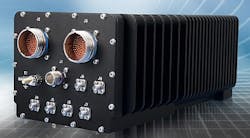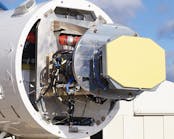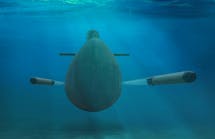Small-form-factor OpenVPX signal recorder introduced by Elma, Pentek, and Concurrent
FREMONT, Calif. 8 Nov. 2012. Three embedded computing companies are joining hands to introduce small-form-factor OpenVPX signal acquisition system for processing and recording in data acquisition, radar, beam forming and other signal processing applications in harsh environments.
The system is from Elma Electronic Inc. in Fremont, Calif.; Pentek Inc. in Upper Saddle River, N.J., and Concurrent Technologies in Woburn, Mass. The SigPro1 OpenATR series demonstrates interoperability of a multivendor OpenVPX-compliant board set, Elma officials say.
Recording at speeds faster than 200 megabytes per second, the rugged small-form-factor signal processing box can operate in dual channel record and playback mode with dual A/D converters operating at 200 megasamples per second at 14-bit or 500 megasamples per second at 12-bit.
The system is based on Pentek's Cobalt series FPGA XMC with a high performance A/D front end, the Concurrent Technologies 803 series 3U VPX-REDI Core i7 single board computer for processing, and a storage subsystem using high capacity solid state disks developed by Elma.
The platform uses a three-slot VPX backplane, with the card payload packaged in a compact, conduction-cooled chassis measuring 5.12 by 6.9 by 12.25 inches. The SigPro1 is passively cooled, with sealed MIL-STD DTL 38999 connectors for I/O.
SigPro1, which operates from a 28-volt DC power supply, includes two-output D/A converters and two 2-1/2" SATA drives. Other I/O includes two Gigabit Ethernet ports, two USB ports and an external VGA port.
Other FPGA firmware and application software can be integrated into the small-form-factor signal processing platform. It is offered by Elma as a general purpose platform and by Pentek with its Talon Data Record software.
For more information contact Elma online at www.elma.com, www.pentek.com, or www.gocct.com.

John Keller | Editor
John Keller is editor-in-chief of Military & Aerospace Electronics magazine, which provides extensive coverage and analysis of enabling electronic and optoelectronic technologies in military, space, and commercial aviation applications. A member of the Military & Aerospace Electronics staff since the magazine's founding in 1989, Mr. Keller took over as chief editor in 1995.



